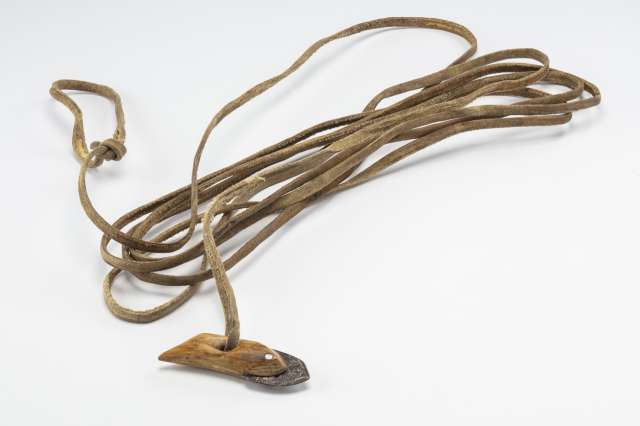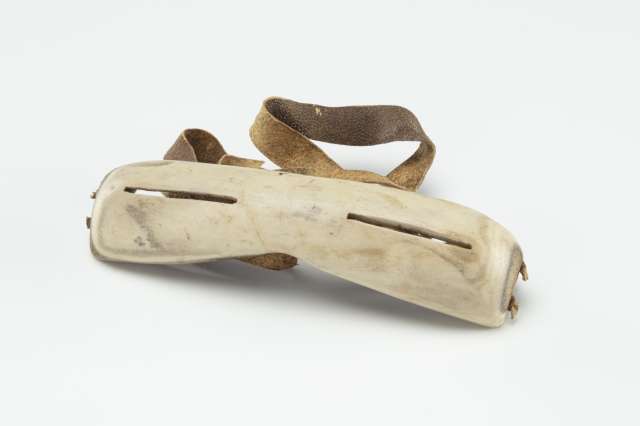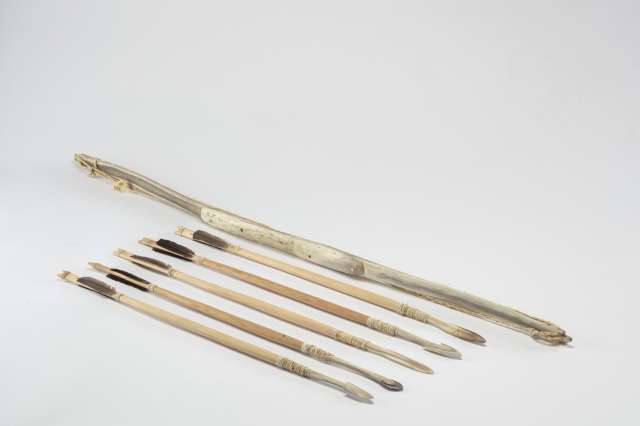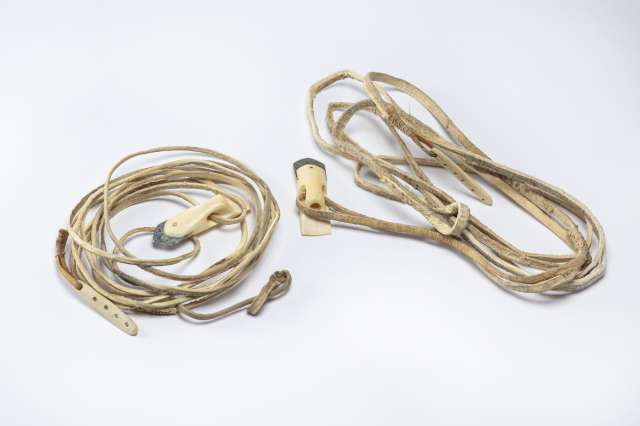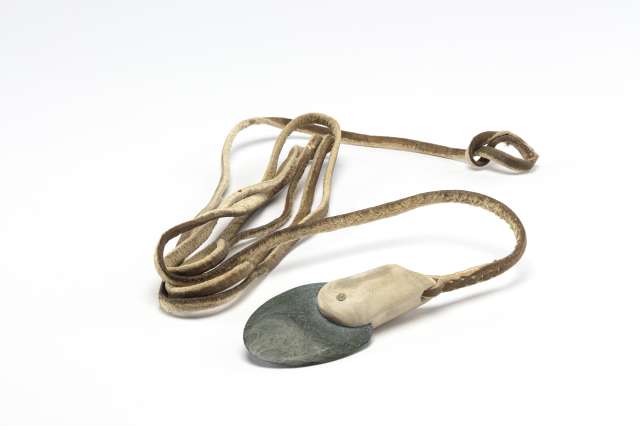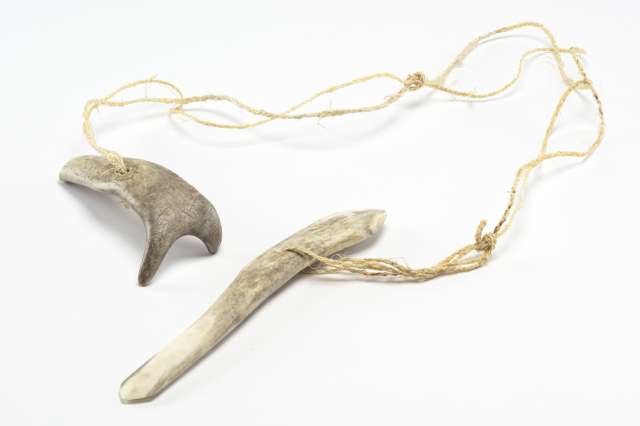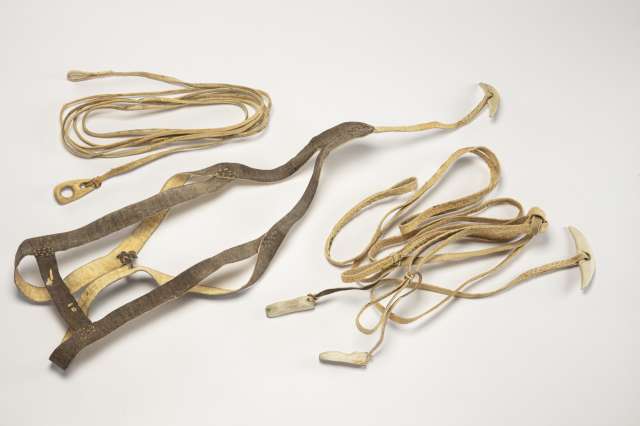Harpoon head (tuukaq) and line
This harpoon head (tuukkaq) was mounted on the end of a harpoon for hunting of large sea mammals. It would detach from the shaft when it was hurled into the animal's flesh. When the hunter pulled on the line (aliq) that ran from the harpoon head, the tuukkaq would pivot sidewise in the animal and embed itself. The animal could then be killed.
Blade
The blade of the harpoon head, called a saviliaq, was sharpened differently for different sea mammals. In the case of walruses, some elders say the blade needed a very sharp edge and a large cutting surface to pierce the animal's thick skin. If the harpoon head was used to hunt belugas or narwhals, the blade was less sharp and the cutting surface smaller because the animal's skin was easier to pierce.
Line
The line had to be sturdy because it was attached to a float (avataq) and because the hunter used it to hold, pull, and drag the animal. It was made of bearded-seal leather and had to be regularly maintained and oiled to keep it from drying out and becoming prone to breakage. In addition, the line had to be thick and not too flexible to keep knots from forming and to reduce the risk of the hunter getting entangled and pulled into the water by the harpooned animal.
Nowadays, similar harpoon heads are still used, but they're made of brass, stainless steel, or metal. In addition, hunters generally buy commercial harpoon lines, instead of making them from bearded-seal skin.

